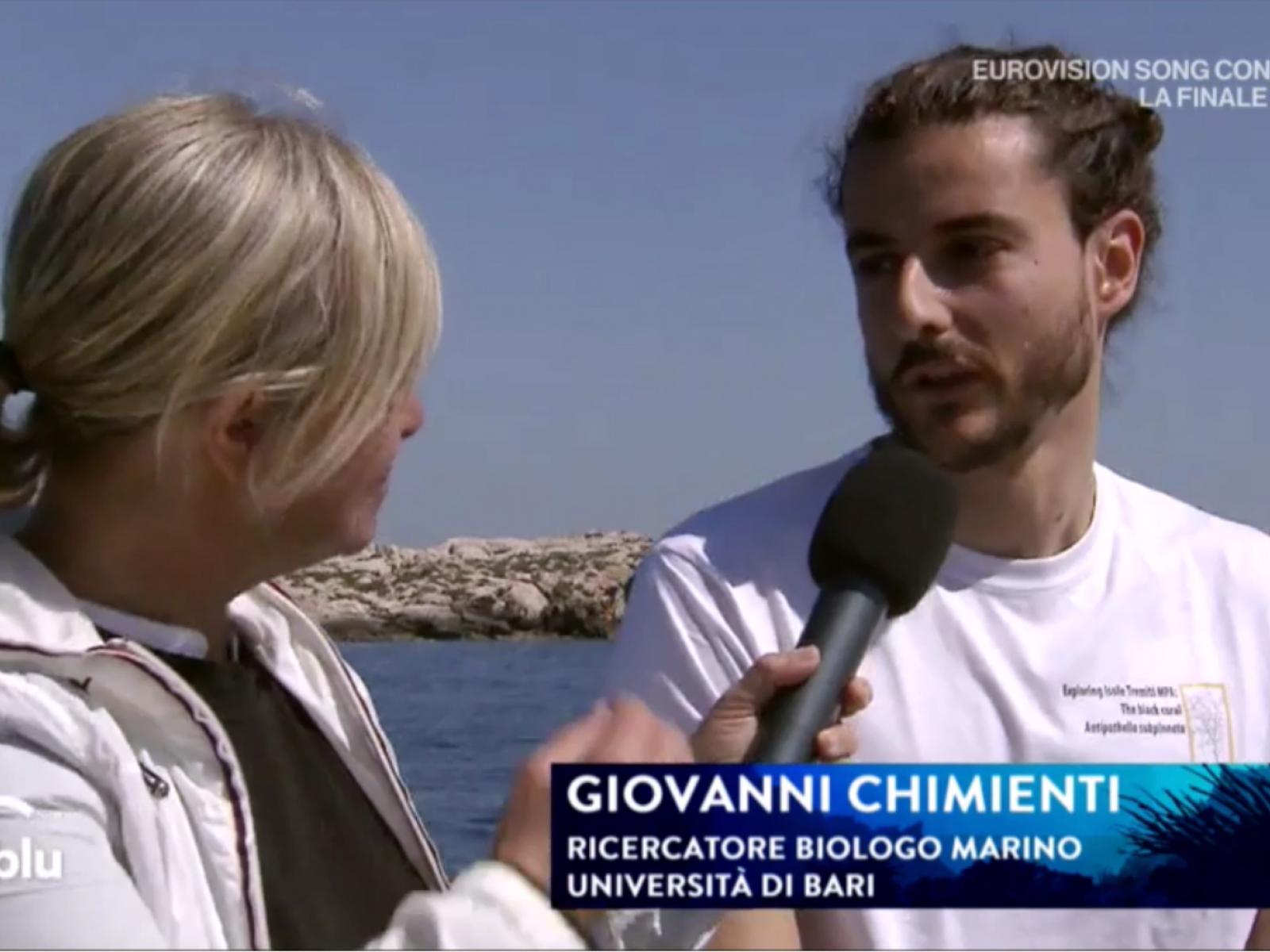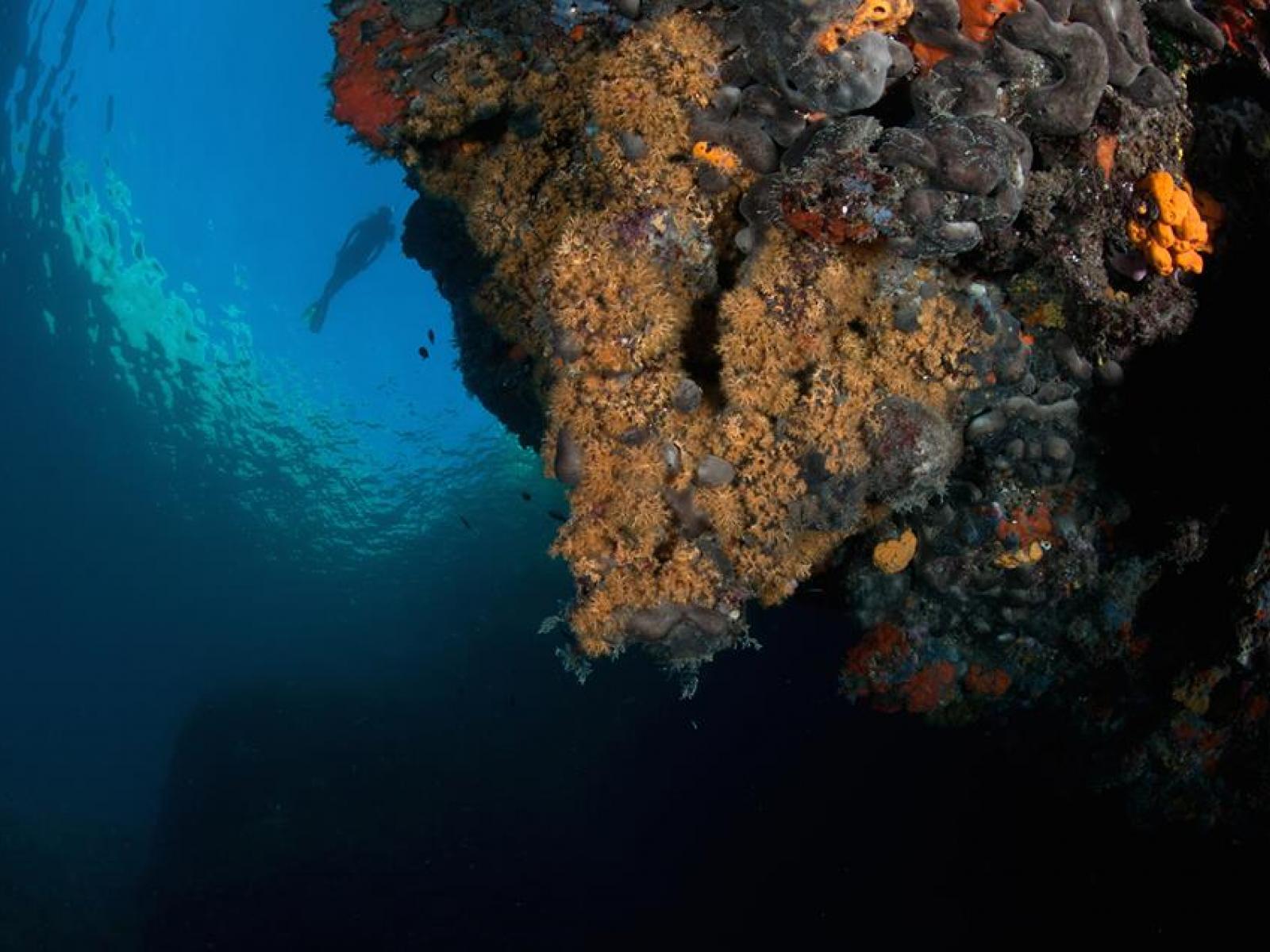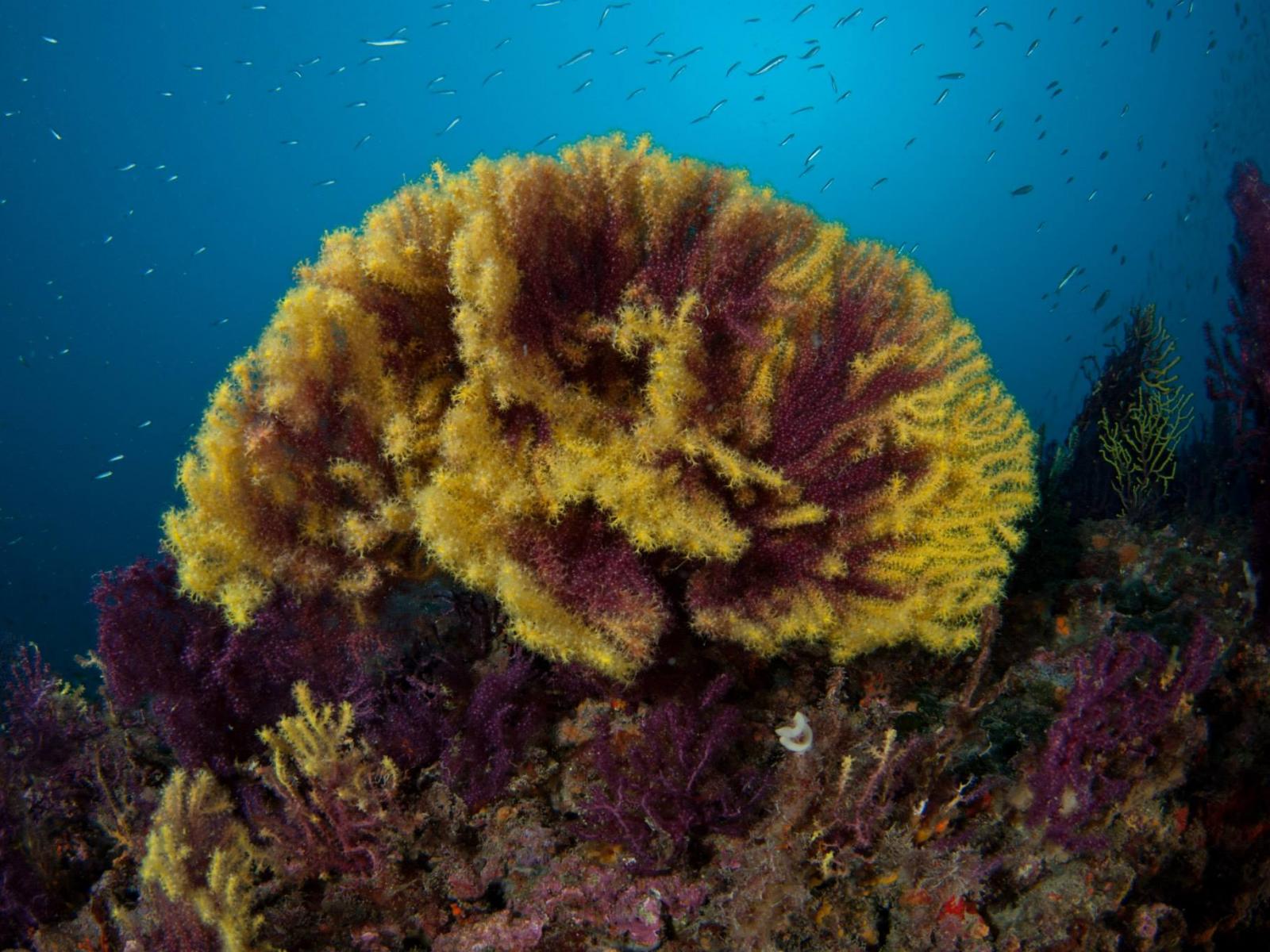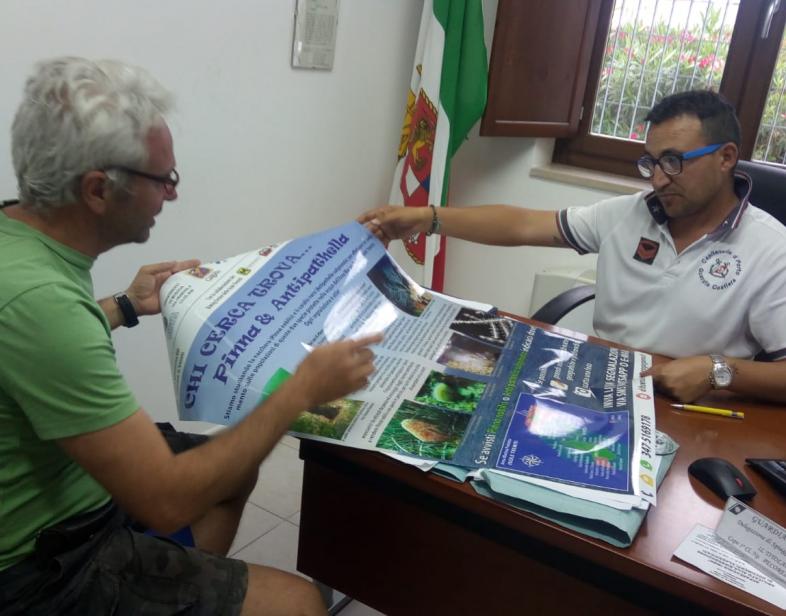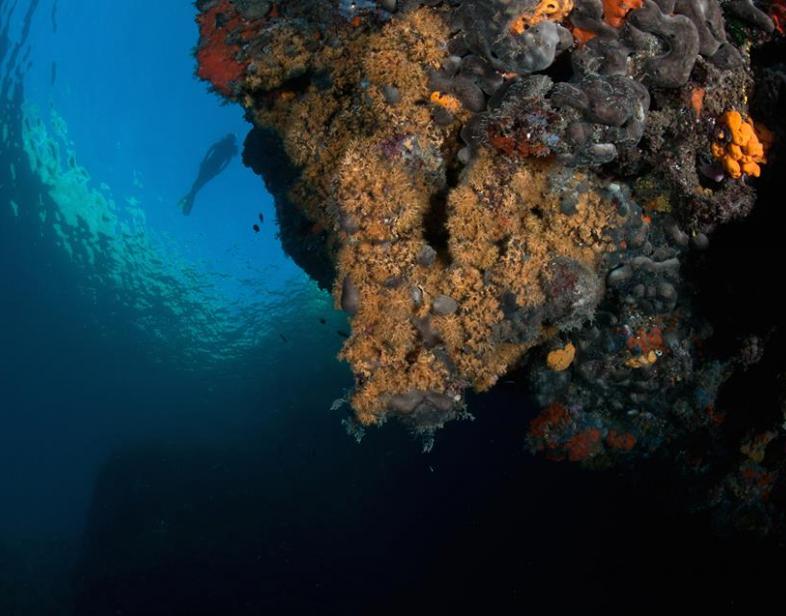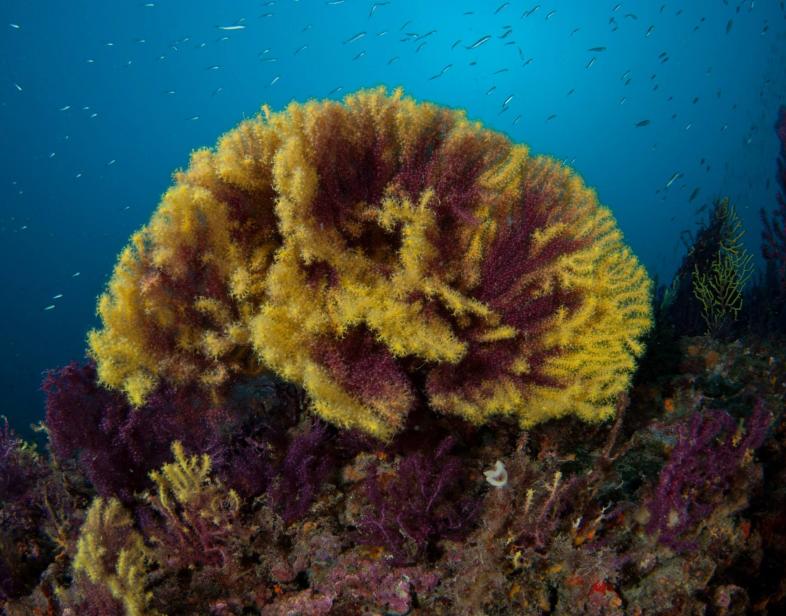An Overview Of Our Solution
Through a scientific-based knowledge properly coupled with good communication practices, anthropogenic impacts on marine environment can be significantly limited. This ambitious goal was achieved at Tremiti islands (Italy, Mediterranean Sea) thanks to targeted scientific studies that highlighted the importance of marine ecosystems to the local economy. Healthy marine habitats proved to be more advantageous from a holistic point of view (e.g., biodiversity hotspot and high aesthetic value) respect the impoverished ones. After these studies, tourists and decision makers resulted willing to adopt specific practices aimed to protect the seabed and to limit the damage of frequentation, as well as to respect fishery restrictions and to ban the use of plastic crookery throughout the archipelago.
- Population Impacted: More than 180,000 per year
- Continent: Europe
Context Analysis
Tremiti islands are a Marine Protected Area (MPA) located in the Adriatic Sea (Italy, Mediterranean Sea). This area is populated by ca. 1000 persons throughout the year, but in the summer period it is visited by more than 180,000 tourists per year. The principal human activities are related to tourism, and they mainly concern fishing, boat renting and SCUBA diving. The high touristic presence is mainly related to the aesthetic value of the environment, particularly due to the presence of coralligenous habitat (the Mediterranean equivalent of tropical coral reefs), attracting an increasing amount of people and proving a suite of ecosystem goods and services, including biodiversity, habitat provision, fishery resources, and climate change regulation. For such a high touristic echo, the archipelago is threatened by actions aiming rapid economic gains, without an ecosystem-based management strategy, and with a significant risk of compromising environmental and ecological balances.
Describe the technical solution you wanted the target audience to adopt
Tremiti islands represent a suitable open laboratory to test solutions aiming to limit human impacts on the environment. The goal is to reach a sustainable fruition of coastal ecosystems, coupling protection and enjoyment of natural resources. To that regard, targeted scientific studies highlighted how sustainable diving practices and limited fishing activities can enhance both ecological and economic values of the area. This approach stimulated an ecosystem-based management, followed by important actions aimed to limiting human impacts, including a proper diving fruitions and the prohibition of plastic crockery. In few years Tremiti is becoming the first plastic-free archipelago in Italy, where decision makers are aware about the great potential value of the natural heritage they manage. This ecological awareness can be reached through the interaction between Science and Communication, and it represents an example of knowledge-enhanced protection applicable to all over the world.
Type of intervention
Describe your behavioral intervention
The main behavioral interventions can be summarized in three categories:
1. SCUBA diving. This could be the key for the sustainable fruition of coastal areas (e.g., Chimienti et al., 2017). Environmental education of both diving operators and their customers allow a sustainable diving frequentation through accurate briefings before the dive and avoiding anchoring practices. Once understood the primary importance of marine habitats, diving centers would be the guardians of their own natural heritage.
2. Fishery impacts. Fishing can be locally forbidden and globally limited through market rules, i.e. by informing people in order to avoid choosing products fished with illegal, non-sustainable or destructive practices. Controlled fishery can preserve seascapes, enhancing the global value of marine areas, attracting people and producing occupation (e.g., travels, restaurants and hotels). Science and Communication are fundamental (Chimienti et al. 2016). 3. Plastic. Concomitant sensitization of tourists and decision makers allowed to reach the banning of disposable plastic crookery and to move toward a completely plastic-free approach at Tremiti islands.
Chimienti G et al 2016 The importance of coralligenous habitat to the local economy of Isole Tremiti MPA: the case of recreational diving. Rapp Comm int Mer Médit 41: 511
Chimienti G et al 2017 Beauty as socio-economic driver in diving frequentation: the case of Isole Tremiti MPA. Biol Mar Medit 24(1):55-56
As needed, please explain the type of intervention in more detail
Emotional appeal: information conveyed through panels, documentaries, masterclasses and disseminative interventions aimed to inform people about the critical importance to adopt proper behaviors for the protection of the environment. By producing knowledge, protection appeared much more possible and positively welcomed from the stakeholders, even when it involves changes in their habits.
Social initiatives: stimulated interventions concerned mainly the ban of plastic, the regulation of fishing practices, the discouraging of highly-polluting big ships arrival, and the recognition of the economic importance of fruition (i.e., aesthetic value) respect to the use of the environment.
Describe your implementation
The main problems were identified thanks to scientific researches assessing the environmental status and the main human activities affecting it. Then possible solutions were figured with sustainable diving activities and limitations of fishing pressures. To address these problems, specific activities aimed to tourists and local operators were carried out to spread knowledge about the main advantages in environmental protection. Among the others, seminars, lessons and courses for student were carried out, often with the involvement of media (newspaper and television) and social-media, to attract the attention on the environmental issues and on the possible solutions. Local decision makers were properly informed and they welcomed some of the solutions suggested, including the limiting of fishing activities and of disposable plastic use. These adoptions passes through local laws, individuating no fishing areas and banning disposable plastic crockery. Other adoption, such as good diving practices, were verified only with direct observations. This goal was achieved thanks to the great beauty of the seascape, representing the best enabling condition. The proper integration of both Science and Communication was the key of the success of such behavioral changes, together with the use of images and technology to support the dissemination of results. Of course some obstacles were present on this path through an environmental-friendly behavior. Many of the commercial fishermen were involved in other activities such as support of scientific operations at sea and touristic tour of the islands, while sportive fishermen were directly involved in action for the protection of the sea, such as underwater photography or guided snorkeling and diving tours. Despite not completely eliminated, impacts of human activities on marine ecosystems, mainly due to fishery, wrong diving practices and production of disposable plastic litter, were significantly limited.
External connections
Connectivity is essential in this kind of intervention. Our actions involved local managers, politicians and decision makers to develop official behavioral protocols and local regulations supporting the behavioral change we wanted to obtain on people. The interaction resulted very strong, and as good as the Marine Protected Area managing body founded the great part of our initiatives and research projects. This process involved also local operators such as diving centers and boat rental agencies, which collaborated in sharing information and assuring that tourists will respect the behavioral suggestions to protect the marine environment. Local and national media were involved for the communication, while the Coast Guard supported both the operations at sea and the dissemination among tourists, boaters and fishermen. Then, national and international attention is still going to be attracted on Tremiti islands environment, in order to continue this process. For instance, I am doing a project as National Geographic explorer, targeting the exploration of some off-shore shoals characterized by the presence of a rare forest of black corals. This is going to further highlight how still little information is available about marine life and how urgent are proper protection strategies.
Who adopted the desired behaviors and to what degree?
Plastic crockery was abolished, so the more than 180,000 tourists per year that came to Tremiti islands adopted this regulation. All the diving centers were very collaborative, implementing their briefings and assuring that their thousands of customers per year adopted a proper behavior underwater.
A survey was carried out before and after the environmental accounting activity aimed to the induction of a behavioral change. A questionnaire was distributed randomly to a sample of 2000 tourists during the summer season of 2016 (before our intervention) and to 2000 tourists in 2017 (after our intervention). More than 80% of tourists was not yet aware to be in a protected area and ignored the proper behaviors to adopt during their holydays. After our intervention, this percentage was close to 0%, and people resulted even willing to pay a “protection tax” to support conservation initiatives in the area, proving a great effectiveness of the communication actions.
How did you impact natural resource use and greenhouse gas emissions?
Marine natural resources of Tremiti islands have been preserved through the remarkable limiting of human impacts due to SCUBA diving, fishery and plastic litter. Moreover, it is now forbidden for tourists to bring their car or any motor vehicle on the islands (with few exceptions). Despite not measured, the banning of plastic and the forbidding of motor vehicles limited the emissions of greenhouse gases. Moreover, the marine habitat preserved through proper behaviors, including Podisonia oceanica meadows and coralligenous bioconstructions, provide well-known ecosystem services including climate regulations and carbon sink. In particular, P. oceanica can organicate the CO2 through its photosynthetic activity, while coralligenous bioconstructors accumulate CaCO3, representing a powerful trap for the atmospheric and water) carbon.
What were some of the resulting co-benefits?
Co-benefits of the behavioral changes adopted at Tremiti islands involves mainly the preservation of the marine environment, with particular attention to the biodiversity maintaining. Moreover, plastic pollution has been strongly reduced, and people’s awareness about their own impacts on the environment is continuously growing. This would allow a sustainable development of the local economy based on the gross revenue that an healthy marine environment can provide when non-destructive fruition activities are preferred to destructive ones (e.g., Chimienti et al. 2017).
Chimienti G et al 2017 An explorative assessment of the importance of Mediterranean coralligenous habitat to local economy: the case of recreational diving. J Env Acc Manag 5(4):310-320
Sustainability
The solution obtained from the different behavior of divers, fishermen and tourists is based on scientific research mainly funded by government. However, it involves a limited budget respect to the results that can be obtained. It represents a sustainable strategy, based on Science and Communication, and replicable everywhere. It is sustainable also from an economic point of view because, with a relatively small investment, fundamental information concerning marine habitats and human impacts can be collected in order to understand how to improve knowledge and protection.
Return on investment
Implementation do not needs more investment, because it represents a “contagious” process that, once started, can be continued by local operators during their daily activities. In fact, the diving centers continue to give accurate briefings and to pay attention to the impact of their customers, decision makers continue to ban plastic litter and fishermen can found alternative incomings related to the touristic industry. The return of the investment is immeasurable in terms of protection of the environment and sustainable fruition of the seascapes. In fact, the preserved aesthetic and ecological value of marine habitats continues to attract tourists and to produce a gross revenue several time higher respect the one of destructive activities.
How could we successfully replicate this solution elsewhere?
This scientific-based behavioral changing is easily replicable everywhere. At Tremiti islands, a starting budget of €30,000 (founded from the MPA managing body) was enough to study the current situation, share results and suggest solutions. Of course it is strongly needed the work of scientists available in dissemination activities, in order to create a certain attention around the main issues and to induce the welcoming of possible solutions. These solutions would need changing of local habits, different strategies and problems, so the stakeholder have to be prepared to such changes. Key stakeholders are local operators, which could be the real “guardians” of their own home, if enough informed about the importance of the environmental preservation. Secondary stakeholders are the tourists, which should be helped in acquiring awareness about their footprint and how to limit it. Finally, marine biologists, ecologists, sociologists and enthusiastic people are needed.


